
Seven Days in Tibet: how to plan a 7-day Tibet tour
For those with only seven days to spend in Tibet, it can be a little hard deciding on which places out of the hundreds that are available to visit. Tibet is a vast region, and covers millions of square kilometers, with monasteries and temples spread all across the plateau. Then you have the famous mountains, as well as the not-so-famous ones, all of which are worth visiting.
The easiest way to plan a trip to Tibet for seven days is to opt for one of the many itineraries that we, as Tibet’s biggest tour operator, offer for tours in Tibet. These itineraries cover all of the major sights that are most popular with tourists and give you the chance to visit all of them within the seven days you have and allow you enough time to acclimatize to the higher altitude of the Tibetan plateau at the same time. If you have never been to Tibet before, it is best to focus on the main attractions of the region, as there is just too much to take in if you try and fit in more.
What to Know Before Visiting Tibet?
Independent travel in Tibet is prohibited, and all tourists to the region must book a tour through a registered Tibetan tour operator. We will handle all the requirements for the permits and passes that you will need for entering and traveling in Tibet, and provide the required guide, driver, and private vehicle for the entire tour.
Travel Documents Needed
The first thing you need, before you can even book a tour with us, is the Chinese Entry Visa. This is easily obtained from your nearest Chinese Embassy in your home country, and for several countries in Europe and for North America, this can actually be done by mail, to save you from having to visit the embassy yourself. Applications require your valid passport, two passport-sized photos, a completed application form, and proof of booking for your return or onward flight and hotel stay in mainland China.
 Some of travel documents needed for Tibet tour.
Some of travel documents needed for Tibet tour.
Once you have booked your tour, we will apply for Tibet Travel Permit on your behalf. Tibet Permit is vital for your Tibet visit. And you need to email the photo image of your Chinese Visa information and passport information to us. The processing of Tibet Permit takes 8-9 days in Lhasa, after we get it and we will deliver it to your hotel in mainland China before you board the flight or Tibet train to Lhasa.
However, for those entering from Nepal, ordinary Chinese Tourist Visas issued by the Chinese Embassy for entry into mainland China are not valid. Instead, a Group Tourist Visa or China Group Visa is issued which allows you 30 days of travel within Tibet and mainland China. The visa is applied for by us on your behalf once you reach Kathmandu, using your original passport and the permits we will already have applied for. Processing normally takes three days, so you will need to be in Nepal at least five days before your expected date of travel.
For the rest of the travel documents, our Tibetan guide will help you get them when needed for different attractions in Tibet.
Basic Means to Reach Tibet
You have several options for actually getting to Tibet, from two directions. If you are entering from Nepal, this is actually the most efficient way to get to Lhasa. The flights from Kathmandu to the Lhasa Gonggar International Airport are the only international flights into Tibet, and take just 90 minutes to cross the vast Tibetan plateau to the capital’s airport.
Alternatively, you can take the flight from one of more than two dozen cities across mainland China, including Beijing, Guangzhou, Chengdu, Chongqing, and Xi’an, among many others. Flight times range from two hours to around eight hours, and the price mainly depends on the departure location in mainland China. However, this is a fast and efficient way to get to the Tibetan capital for those with limited time to spend on travel.
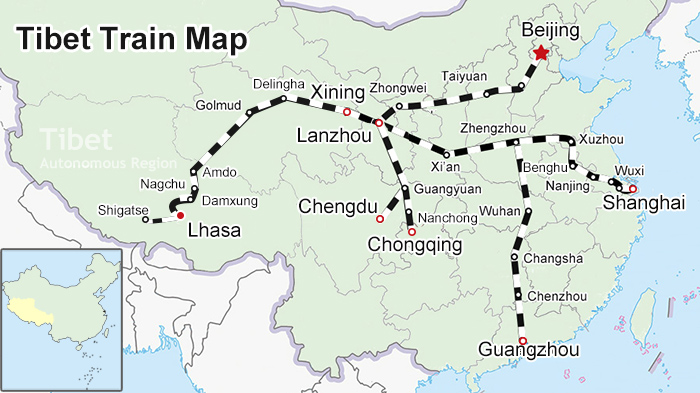 You can easily take Tibet train from major provincial cities to Lhasa.
You can easily take Tibet train from major provincial cities to Lhasa.
The third option, and one of the most spectacular, is to take the Tibet Train from one of the seven gateway cities to Tibet in mainland China. Trains run from Guangzhou, Shanghai, Beijing, Chengdu, Chongqing, Lanzhou, and Xining, and take from 22 hours to 55 hours to reach the Tibetan capital. Crossing major parts of China, and then heading down across the Tibetan plateau from Xining, over two high mountain ranges and the vast grasslands of northern Tibet, these train journeys are an excellent way to get a great view of the plateau’s northern landscapes and wildlife as you steam across the immense plateau landscape.
Tibetan Regions Possible to Visit in 7 Days
For a normal seven-day tour of Tibet, there are actually five regions of Tibet that you could visit during your stay on the plateau. Lhasa, the capital of the Tibet Autonomous Region, is the central location for most tourists to Tibet, and a great place to visit with stunning monasteries and palaces, beautiful sacred lakes, and some of the most beautiful mountains in central Tibet. To the west lies Shigatse Prefecture, the home of the massive mountain that is the highest in the world, Mount Everest. Lying on the border with Nepal, this immense peak is a must-see for any seven-day tour, and you will also be able to visit the Tashilhunpo Monastery, the seat of the famous Panchen Lama.
 7 major Tibetan region in Tibet
7 major Tibetan region in Tibet
South of Lhasa lies Shannan Prefecture, also known in Tibet as Lhoka. The garden of Tibet and one of the most fertile areas of the plateau, Lhoka is the place where the lifeblood of Tibet lies and where the cradle of Tibetan civilization began. Home to the stunning Lake Yamdrok and the first Tibetan Palace and first Tibetan Buddhist Monastery, this unique region is always worth a visit at any time of year. To the north of Lhasa lies Nagqu, the largest of the five regions you can visit and the home of the immense Changtang Prairies, which are teeming with local natural wildlife and migratory birds throughout the year.
To the east of Lhasa lies Nyingchi, the lowest area of the Tibetan plateau, with its mild climate, stunning snow-capped mountain ranges, and beautiful peach trees, which blossom in the spring covering the area in pink and peach blossoms. One of the most beautiful areas of Tibet, it is also the location of the world’s largest canyon, the Yarlung Tsangpo Grand Canyon, which actually dwarfs the Grand Canyon in the United States.
Why You Need to Spend 2 or 3 Days in Lhasa?
Unique Landscape and Climate in Tibet
Tibet is a land that has a unique landscape and climate, and it is important for tourists traveling to the region to acclimatize themselves to the increased altitude in Lhasa before traveling out to the west of the region. A land of mountains and lakes, valleys and forests, this unique plateau landscape is the highest in the world, with an average altitude of around 4,800 meters.
Tibet also has a climate that is unlike any other in the world. Climates across the region can change, depending on where you are and how high it is, and the higher the altitude, the arider the climate becomes. In the east, the climate is mild, more akin to an alpine climate, with a heavier monsoon season than the rest of the plateau. In the west, the climate can be harsh and dry for most of the year, with only a little rain in the monsoon season.
Must-visit Places in Lhasa
Sitting on the top of Moburi, the Red Hill, Potala Palace looks down on the city of Lhasa like a giant looming protector. Built in the 17th century on the site of the former fortress and palace of the ancient Tibetan king, Songtsen Gampo, the palace stands tall with its red and white walls, and is, in fact, two separate palaces, the Red Palace and the White Palace.
The oldest temple in Tibet, Jokhang is also the most sacred building in the region and was built in the 7th century to house the statue of the Buddha Sakyamuni that was brought to Tibet by the Chinese Tang Dynasty wife of the Tibetan king, Songtsen Gampo. The temple is the most popular pilgrim site in Tibet, and hundreds of Tibetan pilgrims arrive daily to prostrate themselves in worship before the temple and walk the ritual kora route around the temple. - Find out more of the classic Lhasa tours.
 Visit the magnificent gilded Jokhang Temple in downtown Lhasa
Visit the magnificent gilded Jokhang Temple in downtown Lhasa
The Jokhang Temple lies in the center of the city, and is surrounded by the amazing Barkhor Street, the famous street in Lhasa where you can buy almost anything Tibetan. AS well as being a great place to buy authentic Tibetan handicrafts and meet the locals in the teahouses, Barkhor Street is the kora route around the outside of Jokhang Temple, and you can always find pilgrims from all across the region making the ritual kora around the temple.
Two of the Great Three Monasteries of the Gelugpa School of Tibetan Buddhism, Sera and Drepung monasteries lie within Lhasa, a few kilometers from the center of the city. Both are important monasteries in Tibetan Buddhism, and Drepung is the leading monastery of the Gelugpa School. Sera Monastery is also as important, and for tourists, is the more popular of the two. Every afternoon, in the debating courtyard of the monastery, the novice monks undergo an intense form of training with their masters.
Possible Alternatives for the Rest of 5 or 4 Days in Tibet
Travel from Lhasa to Everest Base Camp
No visit to Tibet would be complete without a trip to Everest Base Camp. Set far out in the west of Tibet, on the border with Nepal, Mount Everest is the world’s highest mountain and a tourist attraction on both sides of the border. Usually visited after a short tw0-day tour of Lhasa, this amazing journey across the plateau is one of the world’s best road trips.
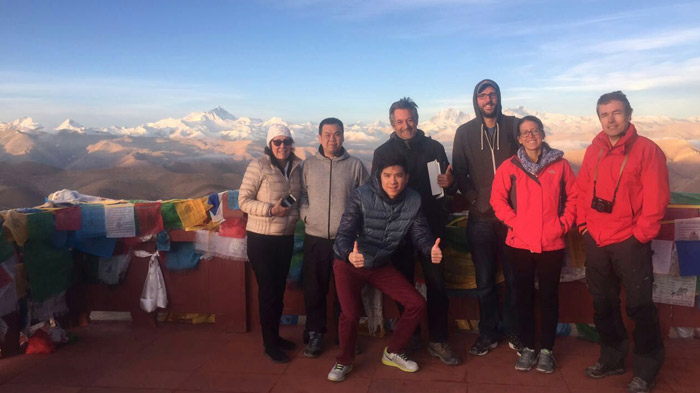 Enjoying the lofty Himalayan Range while on the way to EBC in Tibet
Enjoying the lofty Himalayan Range while on the way to EBC in Tibet
While it may seem a long way, the base camp can be easily reached by road, and the Sino-Nepal Friendship Highway is the major road across the plateau, allowing faster travel than ever before. At the base camp, which lies at an altitude of 5,200 meters, the views of Everest are stupendous, and it is worth the long ride just to say you have been there.
The route to EBC also takes you through Gyantse and Shigatse, two of the major cities of Tibet, where you can visit the stunning sites of the Tashilhunpo Monastery, the seat of Tibetan Buddhism’s Panchen Lama; and the amazing Gyantse Kumbum, a 32-meter high stupa, located in the Pelkor Chode Monastery, that is the only one of its kind in Tibet.
Enjoy the Epic Overland Tour from Lhasa to Kathmandu
If you are thinking of continuing on into Nepal to take on some of the famous trekking trails that this landlocked Himalayan country is renowned for, then there is no better trip than the Lhasa to Kathmandu Overland Experience.
AS well as getting to tour the Tibetan capital and take the stunning road trip across the plateau to Mount Everest, you will travel through some of the most beautiful countrysides in western Tibet as you pass small beautiful lakes and through the spectacular Gyirong Valley, on the way to the Nepal border. The route takes you through Gyirong Port, the new entry point into Tibet from Nepal, and then on down through the Langtang National Park to end in the exotic Nepali capital of Kathmandu.
Enjoy the Journey from Lhasa to Heavenly Namtso Lake
A trip to Tibet can also include one of the main sacred lakes of the region, Lake Namtso. Known in Tibetan as the “Heavenly Lake”, Namtso is one of the most beautiful sights on the plateau, lying between the stunning Nyenchen Tanglha Mountains and the vast Changtang Prairie.
 The surreal beauty of Namtso Lake is worth a visit to travelers.
The surreal beauty of Namtso Lake is worth a visit to travelers.
Ideal as a two-day excursion after touring around the Tibetan capital of Lhasa, a trip to Lake Namtso includes a visit to the Tashi Dor peninsula on the lake, which is the location of a small monastery and several meditation caves, as well as having the chance to star-gaze at night as you lie out on the shores of the lake and look up at the multitude of stars that can be clearly seen. The route back to Lhasa also includes a trip to the Yangpachen Hot Springs, one of the best hot springs in China, where you can relax and soak away the aches of the long journey to Lake Namtso.
Conclusion
If you have seven days to spend on vacation, there is no better place to head for than Tibet, the land at the roof of the world. Filled with mystery and mysticism, this ancient land is one of Buddhist monasteries, high mountains, and spectacular lakes, and is one of the top tourist destinations in Asia. And with our wide range of tours to choose from, you will be spoiled for choice.
 Potala Palace
Potala Palace
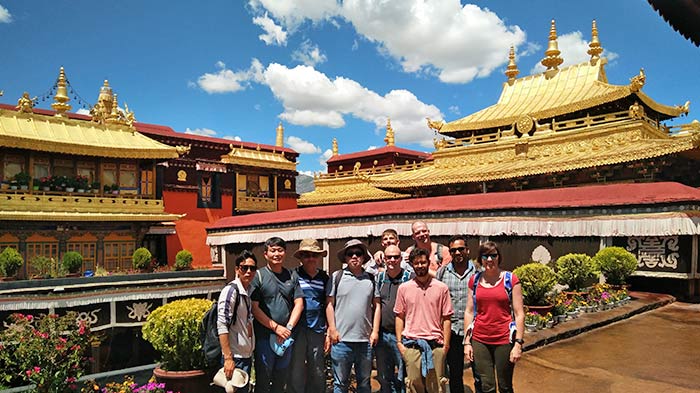 Jokhang Temple
Jokhang Temple
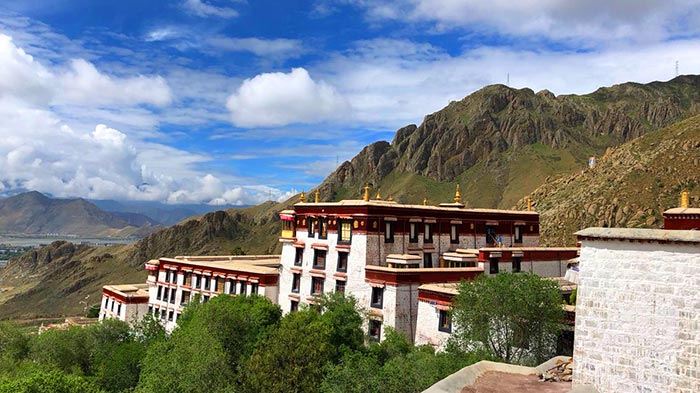 Drepung Monastery
Drepung Monastery
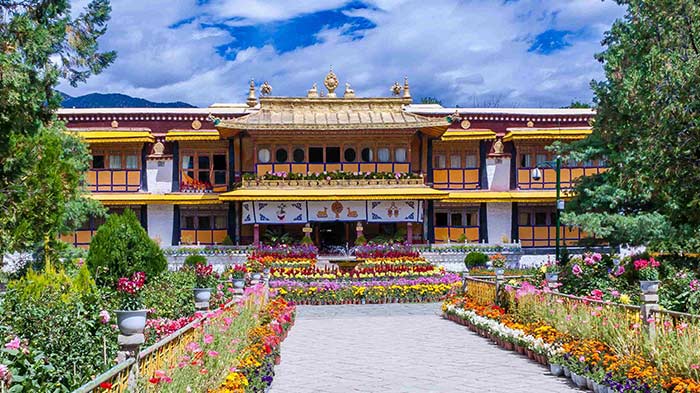 Norbulingka
Norbulingka
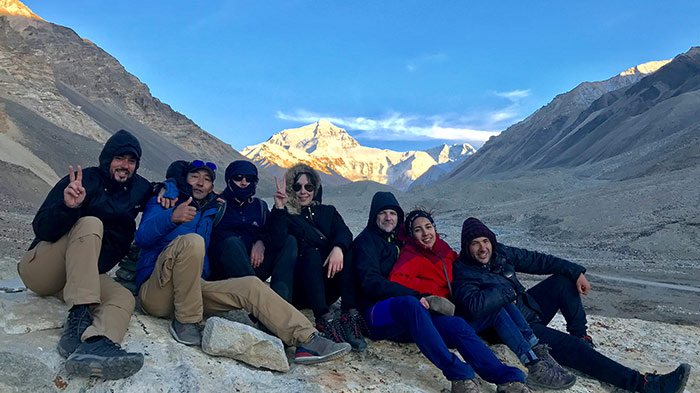 Everest Base Camp
Everest Base Camp

I am a tour guide in Tibet an was Born in Kham Tibet, I am the father of 2 little girls, bachelor's degree. I have more than 7-years experience of being a tour guide in Tibet. I am a warm, friendly, knowledgeable and attractive guy.


.jpg)




0 Comment ON "Seven Days in Tibet: how to plan a 7-day Tibet tour"